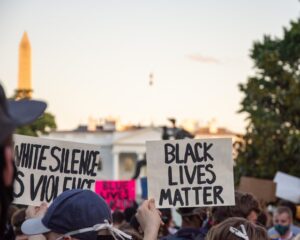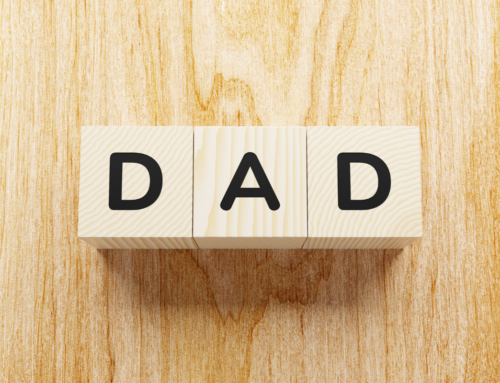Watching the evening news with my husband last week, the stories of George Floyd, the protests, the story Amy Cooper—the women in Central Park telling a black man she was going to call the police because he asked her to put her dog on a leash as required by law—and many other stories demonstrating racial inequity aired on the national news have made me think. As we watched, a deep sadness filled our home, and even my stoic husband had tears in his eyes.
Racism and racial inequity continue to be very much alive in our society.
As a social worker, I have learned many lessons. Many times, when working with people who have experienced oppression, I learned the lessons the hard way. And, often the lessons came by me not recognizing my privilege as a white female. My soft heart and desire to help others was not enough to bridge the inequities that those I was working with experienced. I have befriended many women of color in my life, and I did—and do— my best to not see color or race. What I know today is that was/is a problem. When I did not account for racism and own my privilege, I unconsciously created discord for myself, my clients and my friends.
I will never experience the racism and many inequities of persons of color.
I will never know what it is like to be a person of color. I am a privileged white woman.
Last night my son came home from a gathering with his friends. His best buddy from grade school, a young man of color, had joined the group. Their conversation turned to politics and what had happened to George Floyd. Unfortunately, my son, in sharing a perspective about our current president, offended his friend who got upset and left the party. My son, too, was very upset and didn’t really understand what had happened. This breaks my heart—for both the boys—because I know the love my son feels for his friend and the ardent advocate that he can be.
As I wrote in my last blog, Leaning Into The Wind: How To Manage Change, Grow And Thrive In The Springtime Of A Pandemic, sometimes it takes a huge wind to help us to ground ourselves in truth. My son will never be able to fully appreciate or understand what it is to be a black young man in our world today. He will continue to be faced with many of the same challenges that I learned in my professional life.
From The Perspective Of A Social Worker
My own experiences, like my son’s, have been heartbreaking at times. I started working on the west side of Denver in 2001 shortly after President Clinton started the 60-month clock on people on welfare, instituting a mandatory job or job training initiative. During that time, I worked supporting women with low incomes who were making the transition from TANF (Temporary Assistance to Needy Families) through individual counseling, groups, leadership development and public policy work.
The founders of our organization, Project WISE, focused our work based on research on women and studies done by the Stone Center on the importance of mutuality and relationship in healing. Our mission was to empower women facing economic challenges to achieve their individual and economic goals and positively impact their communities.
“Striving toward a more accurate representation of women’s psychological development, the Stone Center at Wellesley College has become well known for its exploration of women’s ways of defining themselves in relation to others.”
We also drew from the work on empowerment practice, which focuses on the achievement of goals and change of systems by utilizing available strengths, resilience and resources. Supporting our participants individually, collectively and politically mattered greatly to us, and part of the work included having our participants as active members of the organization. The organization’s staff were at the time privileged white women and the participants were women of color—women who suffered from poverty and women who had experienced many life traumas. Lately I have been thinking about my experiences there.
As an intern there in my graduate studies, at first, I was very confused as to why our participants were aloof or standoffish with me or even harsh at some points. My naivete created my story of reverse racism, which I now see as a myth perpetuated mainly by conservative social movements, especially given that there is little evidence that white Americans with resources suffer systemic discrimination, as do many of our neighbors of color. At that time, however, I felt that these women were judging me because I was white, financially stable and educated. “You’re just a houty-touty white bitch,” was one such statement I heard. Yes, I took it personally. Those words hurt my feelings, mainly because I was trying to do the right thing. I was there to “help” these women, right? Help them? Huh. Therein was the problem. They did not need me to “help” them. They needed me to be present, supportive and compassionate and to recognize that our experiences were very different due to the color of our skin.
As I transitioned my work from Project WISE to my emerging practice I came across this quote by Kenneth Blanchard, which goes like this.
“Empowerment is not about giving power to people but releasing the power people already have.”
It became my mission to support the uncovering of that power within each of my clients then and now. As I grew in my professional skills and my knowledge of social justice, racism and economic inequity, I learned to embrace the differences between us. And, as painful as it was sometimes to not be able to fully appreciate or relate exactly, I came to value these differences. I developed an awareness about the distance I feel sometimes with my friends who have a different skin color. The skepticism or seeming mistrust now is my knowing of what is different, and I acknowledge freely that I will never be able to fully get it.
Through A Different Lens
Through my many years working as a social worker and in my day-to-day life, I have witnessed racism and injustice firsthand. Yet, what ended up being my greatest learning was to understand and acknowledge my racism and my own bias. There were times when I got scared if a black person was walking down the alley behind my house. There were times when I could not fully appreciate the experiences of my clients and friends and judged them for not living up to my standards. These internal biases were running all the time. My learning was to be aware of when they occurred and to recognize them. This awareness is key. It allows me to be able to respond to situations versus react.
In my UPROOT curriculum, I teach the ASPIRE method – Awareness, Spacious Presence, Intention, Respond vs React, and Evaluate. This method helps us in many ways, and I believe it can be helpful if you are dealing with some of your own biases and internal racism. Here’s a quick overview:
A. S. P. I. R. E. Methodology:
Awareness: Aspire to know and perceive
Spacious: Aspire to align with inner knowing
Presence: Aspire to be present in the moment
Intention: Aspire to act with purpose and intent
Respond: Aspire to respond to the present moment
Experience | Evaluate: Aspire to experience life fully with continual assessment for empowered living
Understanding Excluding Behavior
The UPROOT curriculum uses a tree as a metaphor and delves into the 12 root causes of human conditioning that hold us back from being our own most true selves. One of the root causes of conditioning addressed is that of excluding. Excluding behavior manifests as forceful, aggressive and controlling. When in the throes of excluding behavior, we get a sense of ourselves (our self-worth and security) by being powerful, in control, strong, dominant, invulnerable and/or on top.
Let’s face it, we live in a world of comparison, and our identity is formed on the externals of money, position, status and reward. We are driven by the need for power and authority and are often driven to anger when we do not get what we want or the recognition that we believe we deserve. It is very difficult to take into account other people’s perspectives. The dogma of my way of being or of seeing things is the only way. This root says, I am right and everyone else is wrong.
The thing is that we lose our perspective in this conditioning. We get identified by believing that our thoughts and beliefs are who we are. We believe that they are our identity. Excluding believes that my way of thinking is the only way. My religion, race, neighborhood, etc. are the only such ones that matter.
In many ways, we are habituated to exclude based on our family of origin, our faith beliefs, our history and our societal conditioning. We must admit that we live in a “race consciousness,” which is when and how people feel a sense of obligation to their race. In this consciousness, people believe that they must serve it and even fight for it. This race consciousness is pervasive. It is universal. And, to at least some degree, it is true of all of us—black, white, gay, straight, male, female or green.
Taking Risks To Create Change
We have to risk being different. In order to change this paradigm, we must be willing to realize things are not the way we perceive them and open ourselves to new ways of thinking. We have to open ourselves to new perspectives. We get to be curious about the experience of our neighbors and inquire about other ways of thinking.
There is so much being presented to us regarding inclusivity and what we can do to be supportive in these times. I am committed to forward-thinking and doing my part to stand against racial inequality and injustice, all the while remembering that my experiences will never be the same as those who do not have my privileges. My goodwill is only a benefit if I stand with my friends of color and support what is in their best interest—holding that their interests belong to them.
Let’s See and Allow Ourselves And Others To Be Seen
I stepped into my vulnerability in writing this blog, and I think that we need vulnerability more than ever right now. We need to and get to take personal inventory, expand our perspectives and have difficult conversations with others and ourselves. We get to expand our awareness and our very consciousness.
There will be a time to fix this, I hope. For now, I stand for love, truth and justice for all.
Resources
Please check out these resources that I’ve found informative and helpful. Also, please share other resources that have helped you, too. I’d also love to hear how all of you are managing these challenging times and any ways that you’ve found helpful to build awareness, offer support and move toward a kinder tomorrow.
Antiracist Allyship Starter Pack
This spreadsheet, Resources & Tools Regarding Racism & Anti/Blackness & How To Be A Better Ally, offers a wealth of valuable information and resources.
Guided meditations offered by Dr. Candice Nicole, psychologist, healer and a Black woman with a love ethic for her activism.
The Root offers a historical account of the timeline of events that led to the 2020 “Fed-UP”-rising.
First Listen. Then, Learn: Anti-Racism Resources For White People
Julia Wuench, a Forbes contributor, offers a list of books that shed light on current issues of race, injustice and activism in today’s socially-charged climate.
This international human right movement originated within the African-American community and campaigns against violence and systematic racism toward black people.
White Fragility: Why It’s So Hard for White People to Talk About Racism
Robin Diangelo’s New York time bestseller explores the counterproductive reactions white people have when their assumptions about race are challenged, and how these reactions maintain racial inequality.
Blessings,
Christy
If you’re struggling with questions of inclusivity and exclusivity and the other myriad of issues coming up for so many of us right now, I am here to offer support. The UPROOT Curriculum is scheduled to begin in early 2021. Please contact me with any questions and sign up on my website to be put on the course list for next year.





